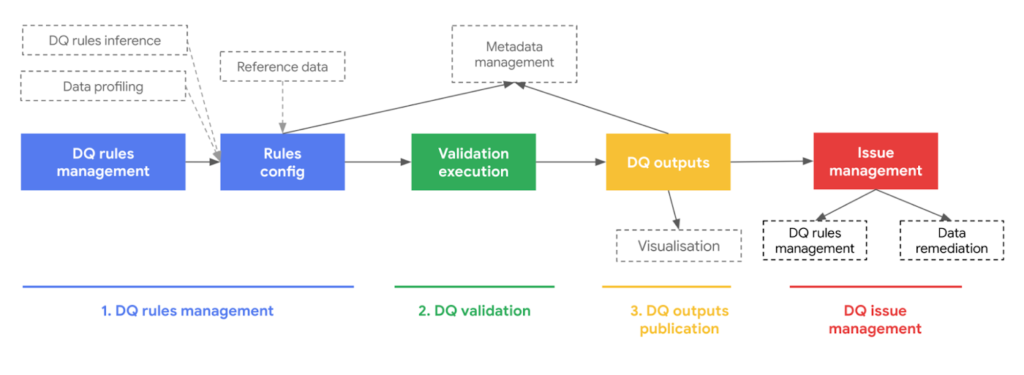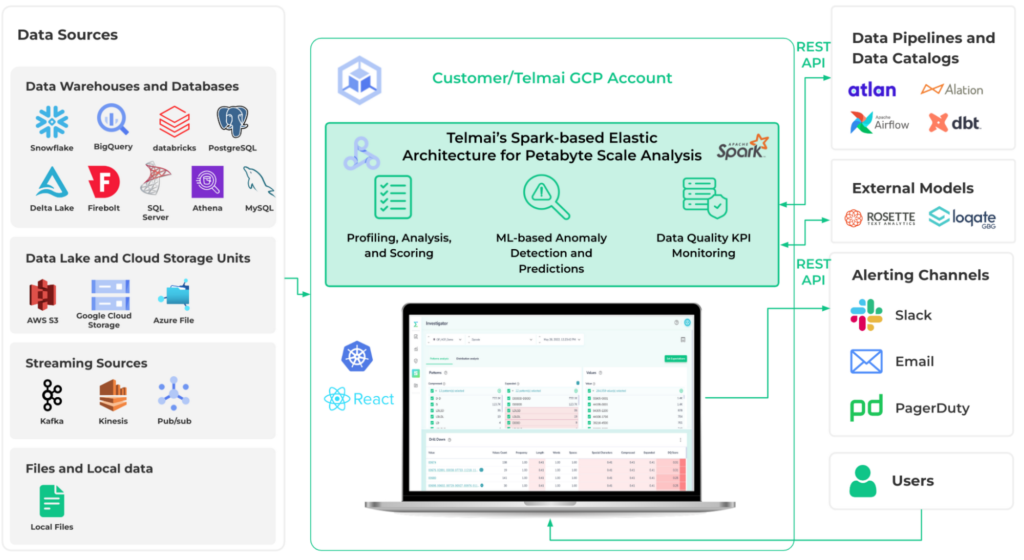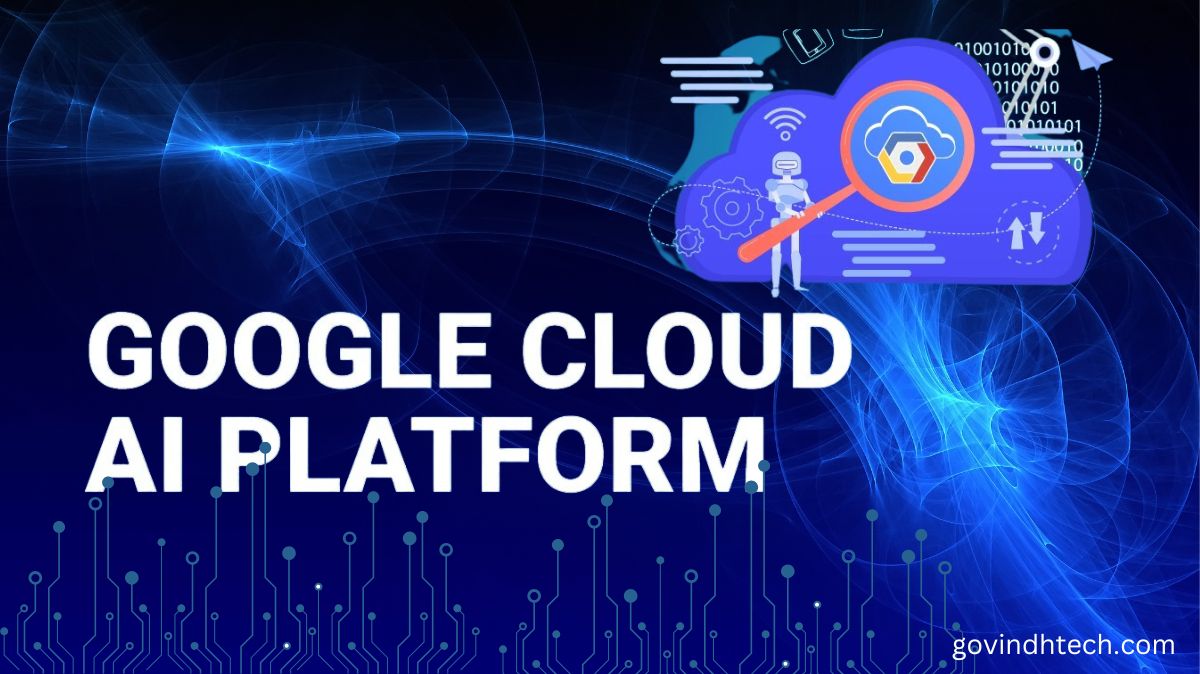In today’s business environment, having a data driven organization is essential. Data driven insights ensure competitive advantage, innovation, and point out areas for expansion. However, in order to take advantage of these benefits, businesses must use high quality data that is accurate, timely, and reliable as well as free from duplications and errors. Using low-quality data for business intelligence and decision-making can have serious repercussions for the company’s customers and its operations.
Data observability helps to ensure that your data is accurate, complete, and current, enabling your organization to make knowledgeable business decisions with high confidence. Data observability is a set of techniques and real-time processes that reveal whether your data contains signals that need investigating. However, Google Cloud is the preferred architecture for running its data observability solution because it requires distributed computing frameworks and large-scale processing power to ensure data accuracy and validity in a timely manner, especially for large volumes of data.
Problems with data quality in the modern data stack
To ensure data quality, organizations have traditionally used a manual, rules-based approach. But due to four major drawbacks, the conventional method [Figure 1] no longer meets the needs of data teams:

Figure 1: Traditional rules-based approach to data quality and mitigation flow
- Operational burden: Managing rules by hand takes a lot of time and is inherently error-prone. The need for a new rule is also only discovered by data teams when something goes wrong because it is a reactive process.
- Cost-effective scalability: Managing data quality and accuracy manually becomes more challenging as data volume and complexity increase, especially when the data is dispersed across multiple data storage systems. Scaling rules-based management requires more human and computing resources without automation built into your processes, which raises costs.
- Semi-structured data is included in batch and streaming data: Building data quality at scale requires examining, finding, and identifying problems across hundreds of tables and across all (or the majority of) attributes in these sources, which frequently contain semi-structured JSON data. These workloads require a lot of computation. A rules-based approach is challenging to implement and scale because many underlying source systems, such as data warehouses, Delta Lakes, analytic databases, and streaming systems, make up a single data pipeline.
- Uncompleted visibility: Rules-based data quality management evaluates data against predefined metrics and issues such as discrepancies, inaccuracies, and inconsistencies are highlighted. However, without data observability tools, anomalies, outliers, and drifts in data may go undetected. In order to learn from your data, predict problems, identify root causes, and monitor changes in your data for signals that merit further examination, these tools employ machine learning and statistical analyses.
Telmai’s Data Observability Platform prefers Google Cloud as its platform
By offering a centralized view of data from all data sources, Telmai Data Observability Platform, built and run on Google Cloud, assists organizations in managing and monitoring the quality of their data. In order to find potential problems like missing values, duplicate records, and incorrect data types, Telmai’s engine performs data profiling and analysis. It also uses ML-based anomaly detection to find unexpected values in the data that may be a sign of a problem and predict what can reasonably be expected. Finally, continuous monitoring is used to find changes in data quality over time.

Telmai considered several cloud computing platforms to build an AI-driven architecture [Figure 2] that could scale and solve data quality and observability issues. Dataproc, Pub/Sub, Google Kubernetes Engine (GKE), and BigQuery were the most cost-effective and performant managed and serverless components, so the company chose Google Cloud. Telmai’s observability solution is easy to deploy for startups and scale to enterprise use cases on Google Cloud with a modern architecture.
Telmai can decouple data quality analysis and anomaly detection from operational systems like BigQuery by using Spark (running via Google Cloud Dataproc). This has three benefits:
- 1.Open architecture: Telmai’s decoupled architecture calculates and monitors data quality metrics and thresholds for any underlying system in customers’ data pipelines without overloading it. This open architecture lets data architects add, upgrade, or swap data systems without redesigning data quality or observability.
- 2.Scalability: Spark allows Telmai to design highly optimized and scalable data monitoring algorithms, where SQL queries failed. Telmai Data Observability Platform can validate data with 100 million+ rows of JSON structures of 1,000+ attributes efficiently, in parallel, and with high throughput using a scalable architecture with elastic resources to monitor hundreds of millions of data metrics and their trends. Clusters autoscale, spin up, and stop with Dataproc service, making scale resilient and easy. This reduces customer solution costs.
- 3.Security and operations: Google Cloud offers strong security. Multi-factor authentication, single sign-on, key store, granular roles, and ease of separating development and production environments are basic security measures, while Security Command Center tracks and fixes vulnerabilities.
Human error is a major security risk for any organization, so infrastructure as code standardizes deployments and reduces misconfigurations and exposures. Telmai uses Kubernetes and GKE to reduce risk and run deployments with low effort in customers’ accounts (private cloud option), keeping all data safe.
Telmai’s development was accelerated by these benefits, including new integrations. Telmai uses managed services like Dataproc and GKE to build its app instead of operating it. The Google Cloud stack gives Telmai infrastructure, auto-scaling, security, DevOps, and more.
Google Cloud and Telmai: Data-observability partners
Google Cloud helps technology companies like Telmai build innovative applications on Google’s data cloud with simplified technology access, dedicated engineering support, and joint go-to-market programs.



[…] has been moving its on-premises data centers to Google Cloud over the past few years. As part of this move, we investigated Vertex AI as an end-to-end machine […]
[…] (a subsidiary of Globe Group), and AT&T to link Taiwan, the Philippines, Guam, and California. Google and NEC are working together to deploy it on the cable. The industry of underwater cables has never […]
[…] increasing computational needs of the newest AI models. In comparison to current solutions, Google Cloud inference systems promise performance improvements of between 2 and 4 times and cost-efficiency […]
[…] Workloads on Google Cloud now supports International Traffic in Arms Regulation (ITAR) capabilities in nine different […]
[…] Google Cloud generative AI to change […]
[…] Vertex AI are all examples of products that can be used to take advantage of machine learning, and Google Cloud Professional Services can assist your company in getting ready to do so. You may learn more by […]
[…] also embraced GKE Workload Identity, enabling application workloads to access Google Cloud Services without managing Identity and Access Management (IAM) service […]
[…] who use the full Google cloud console experience for GCVE may manage their VMware Engine environments without having to open […]
[…] Support for new AI features in iOS 18, plus a suite of device-exclusive AI features […]